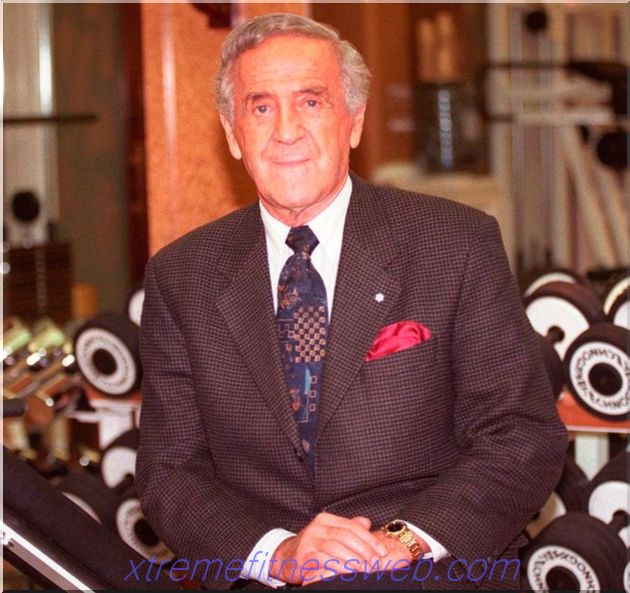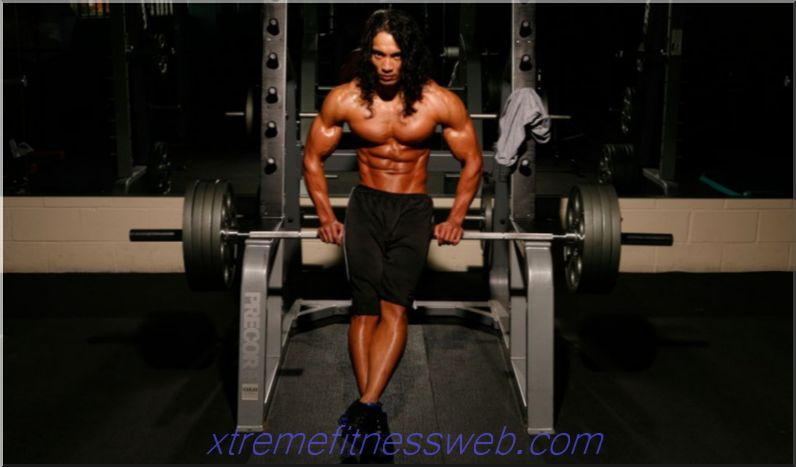- The meaning of exercise and muscle work
- Execution technique
- How to choose a working weight
- Technical errors
- Exercise options
- When you can't do traction

What are we doing to gain back muscle mass ">
Content
- 1 The meaning of exercise and muscle work
- 2 Technique
- 3 How to choose a working weight
- 4 Technical errors
- 5 exercise options
- 5.1 Options depending on the grip
- 5.2 Thrust in different directions
- 5.3 Craving for girls
- 6 When you can not do traction
The meaning of exercise and muscle work

So, the goal is not to increase the mass, but to “grind” the widest ones so that the back becomes deeper, the relief is pronounced, and the outlines are clear and impressive. In power sports, movement is used as an auxiliary exercise for the bench press, as it teaches to bring the shoulder blades to the spine with a flat back. Exercise is also used as a rehabilitation exercise for injuries and muscle sprains, it allows you to recover faster and not lose tone when there is no way to train hard.
In the thrust of the horizontal unit work:
- The broadest muscles, the displacement of the load vector allows you to work out their individual segments or "parts of the back";
- Rhomboid, these are the muscles responsible for our posture, and their tone is the key to shoulder health, because in power exercises the correct operation of the diamond-shaped ones is the basis for stabilizing the back;
- Biceps - they bend the arm at the elbow, "reach" the handle of the simulator to the belt. Many tend to turn them off completely, but in fitness, working with them on allows you to do without a thousand additional exercises on your hands, especially when it comes to girls. For the tone, such a load is quite enough, more serious goals are achieved by specialized exercises;
- Trapeziums, large round muscles, and posterior deltoid bundles are additionally included in the exercise
Exercise includes third or fourth back training, depending on the purpose of the training cycle, but it can give bonuses to both professional athletes and fitness lovers.
Execution technique

Movement is technically simple. It is available to beginners, amateurs, and even rehabilitation clients. Performed in a block simulator with bottom or horizontal cable mount. If there is no such simulator in the hall, you can "assemble" it by installing the crossover cable at the desired level and sit on a regular bench. Legs in this position rest on pancakes, but fortunately, in most modern halls, you do not need to engage in design activities. It is enough to take a simulator.
How to do the exercise:
- Sit on the car seat, grab the handle with your hands in a straight grip, and place your feet on the stand at point-blank range;
- Take a vertical position;
- The shoulder blades are brought to the spine, the back is straight;
- By reducing the widest start in traction, bring weight to the biceps;
- Hold with a pen in the abdomen for 1-2 seconds;
- Perform all repetitions;
- Return the handle to its original position, and end the movement
The exercise is performed in 3-4 working approaches of 10-15 repetitions, but there may be other options, due to human needs.
How to choose a working weight

The general rule for fitness is that 2-3 repetitions should be completed with difficulty, through burning muscles, but without breaking the technique. That is, the ability to perform the exercise should be preserved, but the person should not work through over-effort.
You can use a simple scheme:
- Set the weight of the weight to 10-15 kg and perform 5 repetitions;
- If it is very easy to work, add 2.5 kg and do a couple more repetitions;
- Walk in this way to a weight that will actually be difficult to lift;
- Leave the approach, and rest for 2-3 minutes or until complete recovery;
- Perform 12 reps with this weight;
- If it was easy - again add weight
Important: you need to rest in the approach until full recovery in order to choose the really right weight.
Technical errors

Most simulators for horizontal traction are designed taking into account the anatomical features of a person, and allow you to pull the weight without jerking, jerking, or breaking the technique. The movement can be performed smoothly and accurately, and this applies to people with any anthropometry.
Typical mistakes should be avoided simply because making them will not allow you to get enough load, or redistribute the work in such a way that a person injures muscles, joints or ligaments.
During traction, the following must be avoided:
- Works like a rowing machine . Some athletes kick their feet on the pedals of the block simulator, and manage to unbend and bend them at their knees, fidgeting in the seat. This allows you to additionally load the legs, and does not give the opportunity to work in the amplitude that is needed to work out the back. By shifting the pelvis back and forth, a person reduces the amplitude for the latissimus dorsi, and redistributes the load. In addition, “rowing” can cause trapezius muscle stretching and shoulder injury due to shifting force vectors;
- Workout on a rounded back . Owners of "office posture", that is, the heads of the shoulders twisted forward, and a weak diamond-shaped muscle of the back with an overdeveloped trapeze, often perform this exercise incorrectly. They do not pull the shoulder blades to the spine and do not actively work with their backs. This option does not allow them to load the widest and rhomboid, traction is performed by the biceps and, partly, due to the "throwing" of the weight upwards with the shoulders, the biomechanics of movement are significantly impaired;
- "Movement in three planes . " Recently, it has become fashionable to promote wave-like work with the spine in some strength exercises. This is called fitness in three planes. But in the craving for the belt, this is not appropriate, since due to the sitting position, the lumbar spine completely takes over the load. Excessive “looseness” in the back leads to overload and injury;
- Stretching arms forward with each repetition . This may be due to athlete anthropometry. People with long legs and short arms should fix their legs as tightly as possible, and tilt with traction only once - when they grab the handle of the simulator;
- Work in different planes in one approach . Block traction can be performed both to the waist and to the stomach, or to the top of the chest. But working in different planes is harmful to ligaments and joints. It overloads the shoulder joint, and can lead to the fact that a person will then suffer pains. In addition, part of the load will shift to the hands, since it is they who “direct” the simulator handle to different planes.
Technical errors can be avoided by adequately selecting the weight for work, and not in a hurry to perform repetitions. Motion control should be the basis of training.
Exercise options

Variations vary depending on the features of the simulator, handle and seat height. The same traction can be performed in the lever simulator or in the hammer to get enough load.
Grip options
- When pulling with a narrow grip with co-oriented palms, a good stretch of the center of the back and the broadest muscles is created. This version of the exercise allows you to work out the so-called "depth" of the back, to give relief to the center of the widest.
- The option of traction with a wide setting of the arms and palms inward with the perpendicular floor of the forearm allows you to additionally use not only the top of the broadest, but also the posterior bundles of the deltoid muscles. This contributes to the formation of a beautiful, T-shaped back.
- If you direct your palms inward, and leave the grip wide, or hold the curved bar for traction with your hands, the exercise will turn into a real “sculptor” for the contours of the back, and will allow you to create a beautiful relief with the widest design.
Thrust in different directions
There is a simple principle that applies to which part of the body we are craving; muscles are involved there more. To work on the middle part of the back, you need to pull to the waist, waist line, and try to make a movement due to the back muscles. Craving for the groin contributes to the design of the lower segment of the broadest, and to the chest - the upper. It is more convenient for beginners to pull it to the chest, since their center of the back often lags behind. You can alternate the direction of traction from training to training in order to develop your back harmoniously.
Draft for girls

This exercise is often included in women's training, which is completely justified. Most girls do not want to have a significant mass of back muscles, and are content with a small correction of posture and tone. The movement helps to activate the widest, removes ugly "waves" on the back, which appear with insufficient muscle tone, and allows you to get rid of pain. In women's training, this may be the only horizontal thrust if the goal is solely in losing weight and maintaining muscle tone.
When you can't do traction
This exercise has quite a few contraindications. Usually an active spasm of the piriformis muscle does not allow you to pull while sitting until it is eliminated and completely kneaded. If there is pain in the buttock, extending to the lower back and leg, it is worthwhile to pull while standing at the crossover with a vertical back, and use light weight, while the buttock and pear-shaped need to be stretched.
Pain in the lower back of any nature also allows you to perform traction while standing at the crossover, or when lying face down on a bench with low weight, but not in the simulator while sitting. Lumbar hernias are a contraindication to this craving only if a person cannot sit in principle, and cannot pull with good technique.
In other cases, the movement can be included in the training programs of both beginners and professionals.







